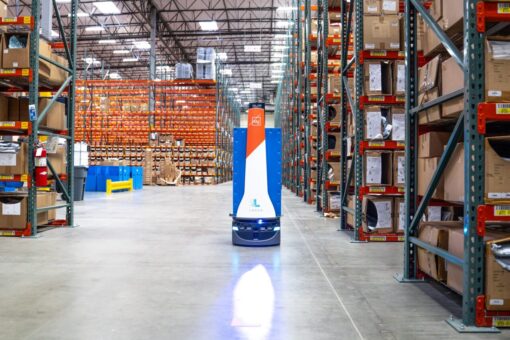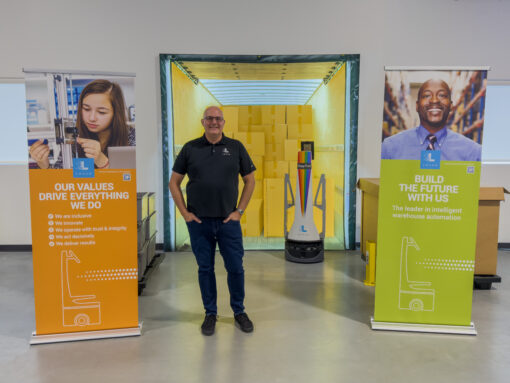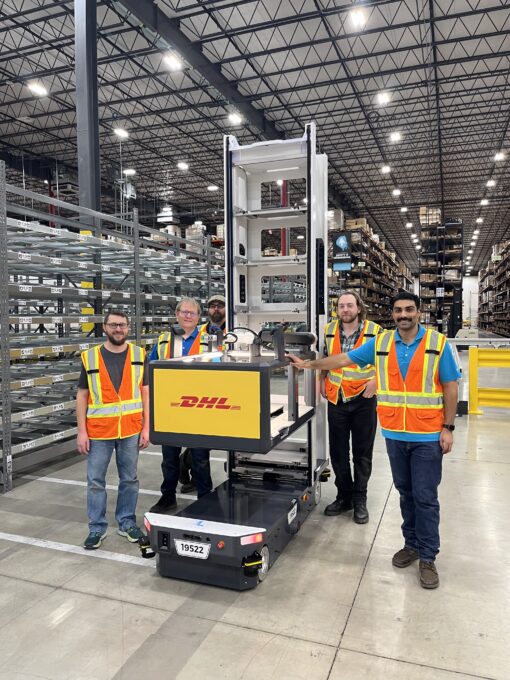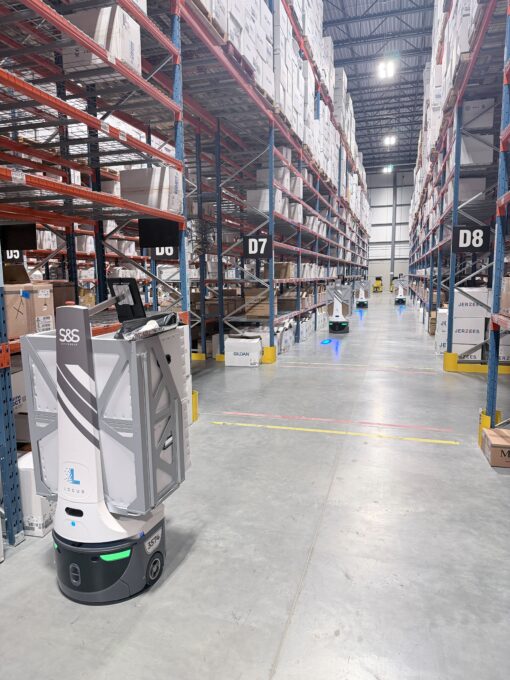WP: How to achieve 400 UPH with Locus Fast Pick
WP: How to achieve 400 UPH with Locus Fast Pick Download Now!
How to Choose the Right Automation for Your Warehouse
Mary Hart, Sr. Content Marketing Manager
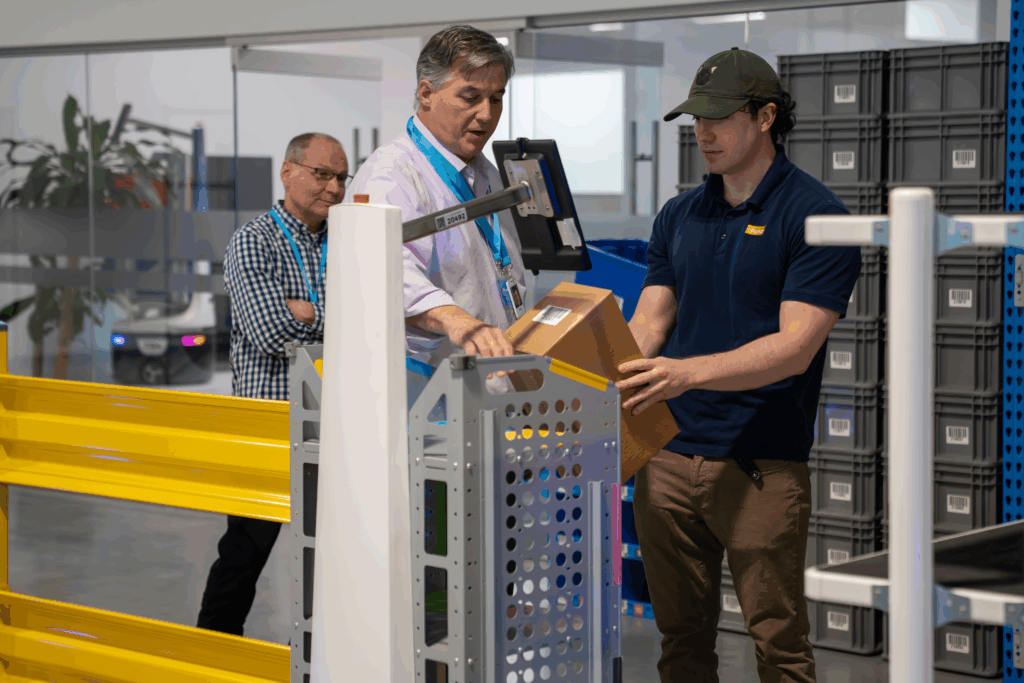
With shifting customer expectations, chronic labor shortages, and increasing order complexity, warehouse automation has become a strategic priority for operational leaders. But navigating the landscape of warehouse automation solutions, from robotics to software to material handling equipment (MHE) can be daunting.
This guide is designed to simplify the decision-making process for operations teams evaluating their options. Whether you're exploring autonomous mobile robots (AMRs), evaluating WMS upgrades, or considering full-scale system integration, the path to the right solution begins with clarity around your goals, constraints, and long-term strategy.
Start with Your Business Needs and Not the Technology
Too often, warehouse automation decisions are driven by features and not business impact. For the best results, flip that script, and start by asking:
- What pain points are we trying to solve? Picking accuracy? Order cycle time? Labor dependency?
- What’s holding us back today? Consider operational bottlenecks, seasonal variability, manual processes, or layout inefficiencies.
- What outcomes matter most? These may include improving throughput, enabling 24/7 operations, scaling with demand, or reducing cost per order.
Knowing what you’re solving for will help you prioritize which types of warehouse automation (software, hardware, or both) are worth exploring.
Features That Make an Automation Solution Work (Now and Later)
There’s no one-size-fits-all solution, but the best warehouse automation systems offer flexibility to adapt to your evolving business and include:
- Modular Scalability: Can you expand gradually, adding capacity or functionality as needed? Look for solutions that support phased implementation and scale on demand.
- System Compatibility: Whether you’re adding robots, conveyors, or software layers, seamless integration with your WMS, ERP, and other tools is critical.
- Configurable Workflows: Ensure the system can handle your specific use cases — from zone picking to B2C/DTC shipping — and adjust easily as your operation changes.
Thinking Beyond Price: Total Cost and True ROI
The key to figuring out the true cost of warehouse automation is understanding the value it drives over time.
- Upfront vs. Long-Term Costs: Consider not only equipment or licensing fees but also installation, IT resources, training, and maintenance.
- Productivity Gains and Labor Savings: How many manual steps are eliminated? How much faster can orders move? What does that mean for staffing needs or training time?
- Payback Period: Many solutions offer ROI within 12 to 24 months but be sure to run the numbers based on your order volume, labor rates, and existing systems.
Vetting the Vendor: More Than a Sales Pitch
Warehouse automation providers sell a tool in the form of a system that your business will rely on daily, so it’s important to know who you’re working with.
- Proven Experience: Look for vendors with successful deployments in environments like yours and ask for references.
- Customer Support: What happens after go-live? Consider onboarding, response time, ongoing support, and the ability to adapt or optimize the solution over time.
- Partnership Mentality: You want a team that’s invested in your success, and not just closing the deal, so long-term collaboration should be part of the offer.
Choose Warehouse Automation Solutions That Evolve
Today’s warehouse automation decisions must account for tomorrow’s needs. To that end, prioritize technologies that grow and improve with your operation.
- AI and Data-Driven Intelligence: Smarter warehouse automation adapts in real time. Look for systems that use AI and data-driven intelligence to optimize pick paths, allocate resources dynamically, or improve through machine learning.
- Real-Time Visibility and Analytics: The best solutions surface actionable insights from performance dashboards to predictive maintenance alerts.
- Upgradable Infrastructure: Can the software update over time? Can new components (robots, workstations, conveyors) be added without starting from scratch?
Successful Warehouse Automation Implementations
The transition to automation doesn’t end with installation. Execution is everything.
- Change Management: Involve operations teams early. Build excitement and clarity around what’s changing, and why.
- Staff Training: Choose solutions with intuitive interfaces and hands-on onboarding. The faster your team adapts, the faster you see results.
- Phased Deployment: A well-planned rollout, starting with a single zone or workflow, lets you refine processes before scaling system-wide.
A Real World Warehouse Automation Case Study
A leading third-party logistics provider sought to enhance efficiency and reduce labor strain in a multi-client warehouse. By implementing autonomous robots equipped with cart-handling capabilities, they achieved:
- A 50% increase in productivity, elevating units picked per hour from 65 to 98.
- A 75% reduction in overtime, optimizing labor utilization.
- Significant reduction in manual travel, as AMRs took over the physically demanding task of moving heavy carts.
These outcomes were realized through a solution that seamlessly integrated with existing operations, required minimal infrastructure changes, and provided real-time performance insights. The success stemmed from selecting technology aligned with clear operational goals and partnering with a provider committed to ongoing support.
Invest Strategically, Scale Intelligently
Choosing a warehouse automation solution is about building a foundation that can scale, adapt, and deliver long-term value in your warehouse operations. Start with your needs, evaluate for flexibility and ROI, and choose partners who understand the realities of your business.
If you're exploring warehouse automation that delivers unmatched flexibility and unlimited throughput, without overhauling your entire infrastructure, Locus Robotics can help you make the right move. Let’s talk.

